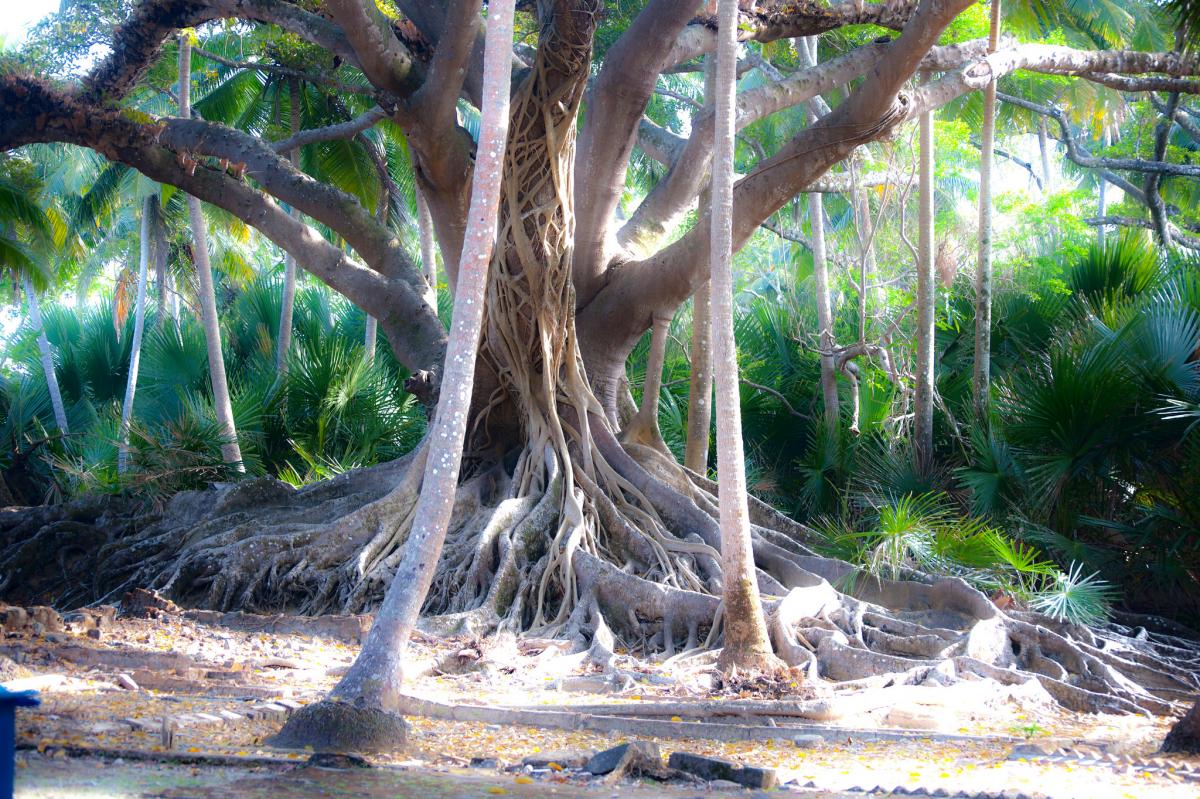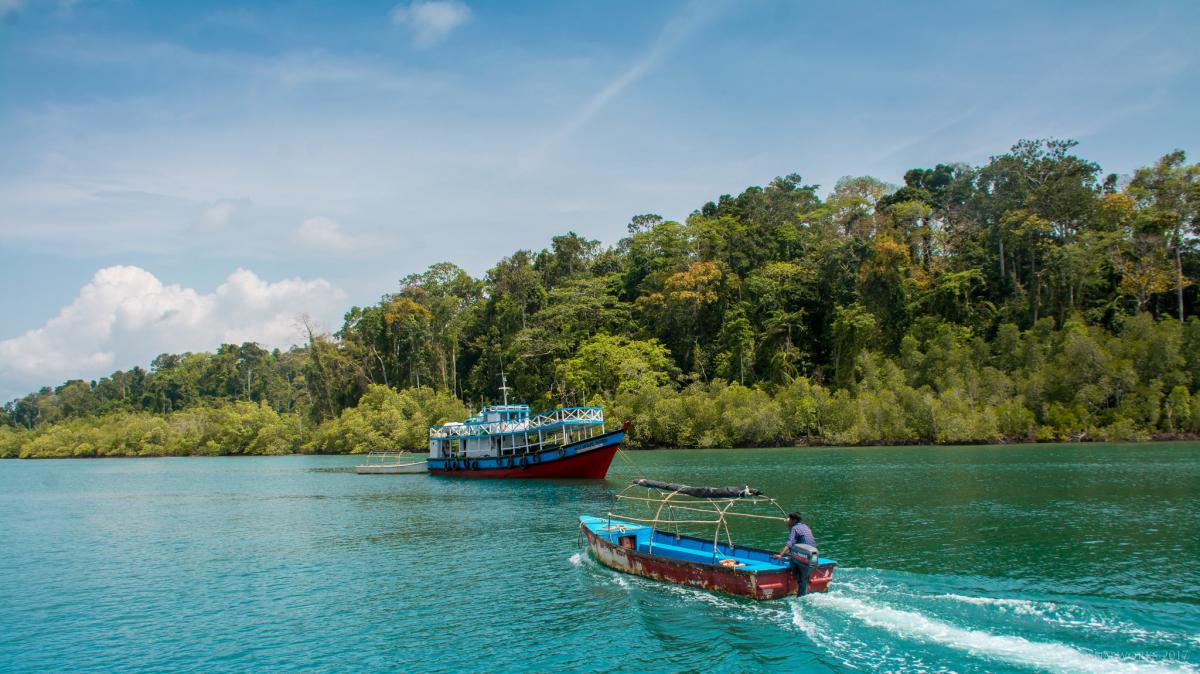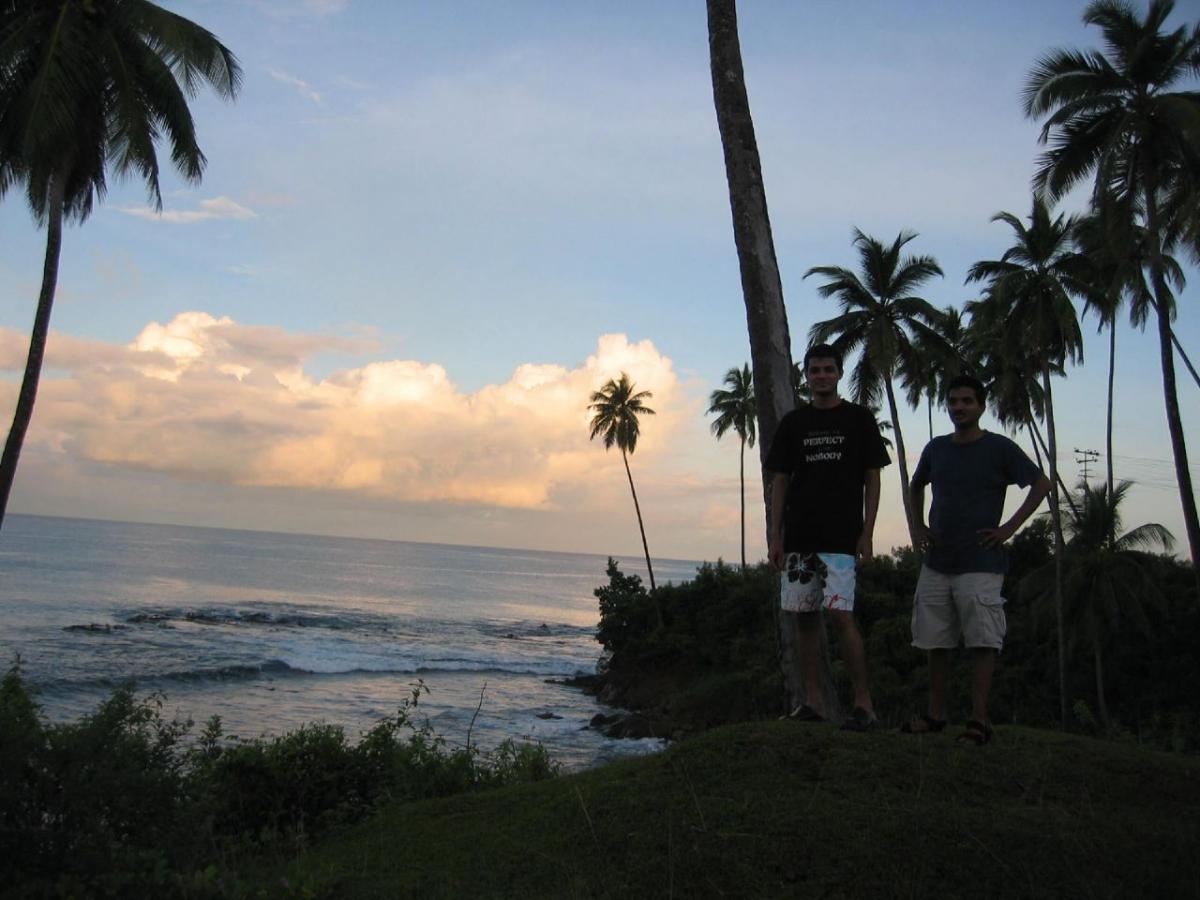Krish, W4VKU will be active as VU4N from Andaman Islands, IOTA AS - 001, 16 - 26 December 2023.
He will operate on 160 - 6m, FT8, SSB.
Recent DX Spots VU4N
VU4N Log search QSL via home call.
Ads for direct QSL:
Krishna Kanakasapapathi, 102 Brook Creek Dr, Cary, NC, 27519, USA.
VU4N Andaman Islands News 27 December 2023
10:00Z - The 60m Vertical is back up, since many of you have asked for it. So went and get some help to put it up and the SWR is spot on, as per the radio and did not even need to engage the tuner.
The 80/160 vertical has been removed from the beach at low tide.
So tonight, it will be 30/40/60 and 2 higher bands.
The hex beam will come down around 11:30z, so until then, it will run 6m
VU4N.
VU4N Andaman Islands News 26 December 2023
Update Dec 27, 2023( 01:30am local time) - The 160m vertical SWR seems to be acceptable to Acom, so it is now chugging along. If you want a 160m Contact, please try ASAP. Sunrise in 4 hours at 00:00z
VU4N Andaman Islands News 25 December 2023
Update Dec 25, 2023:
Merry christmas to everyone!!
7am IST - The tide is still high at this time and the verticals did well at night.
It rained last night and the 20m vertical SWR was high and the KPA500 was on the band. I noticed the SWR at 3.0 and i reduced the power, and at the next transmit cycle, the amp went offline, stating Hi Reflection. I heard a Pop. This morning, when the radio transmits through the amp, the SWR is high. But when the amp is bypassed, the SWR is fine. So i believe, i lost the KPA500. Will need to bring it back to W4 for service. Was not expecting to do so, since this amp was a part of the VU2VKU station.
VU4N.
VU4N Andaman Islands News 24 December 2023
Update Dec 24, 2023:
I have been trying to get this 60m vertical tuned and it has been a challenge. I shut the station down today, during the day and worked on the vertical. Some progress, but no go as yet. This was a piece of cake in VU7A. At any rate, one more try on Dec 25th at low tide.
QRN continues to be an issue at Sunset and through the night. I installed the MFJ nosie canceller and used the Hexbeam as the sense antenna. I had it on 40m on 24th and it dropped the QRN by 2 S-units. Today, it is on the 80m setup. I wish, i had a few of those for each of the radio.
QRT plans - The permission for the special call expires at 23:59 IST (18:29Z) Dec 27. I plan to depart by noon on Dec 28th. All gear needs to be packed and ready by 9:00am on Dec 28th.
Btw, the 80/160m vertical will need to be taken down on Dec 27, during the day time. Primarily due to the tide schedule. It does not lend to removing it at daybreak on Dec 28. I will not be able to pack it up for cargo and departure, if i plan to remove on Dec 28 morning. The low tide is at 3:48am and high tide is 9:43am. It may be alright at 5:30am, but getting help at that time, might be a hit or miss, esp if i wait till Dec 28. So will run the 30/40 vertical on Dec 27th at my sunset and night. May be will be on the high bands too, depending upon whats open. The Hexbeam will also come down during the day on Dec 27th.
VU4N.
VU4N Andaman Islands News 22 December 2023
VU4N Update 22, 2023:
Today, i brought down the 80/160 vertical again at low tide, since we had the 160m wire and the 80m wire tangled up. So happy to report that the tide is back up and the vertical is in the water and the SWR looks to be spot on.
The same with the 30/40 vertical. Appears to be holding up well. I moved the 60m vertical from behind the sea wall to into the water. This way, can avoid any QRN. Yet to go and tune it. This VNA that i use does not tell you that the battery is low, but it does weird stuff :). At any rate, will go out and try to tune the 60m too.
Will post pics of the verticals soon. Esp the before and after and i would also like to post videos of the QRN, before and after. Let me find time. This has been a test of endurance and persistence. And we don't give up? Do we? :)
VU4N.
VU4N Andaman Islands News 20 December 2023
Update 20, 2023:
The 5th radio is up and running now after some cabling and soldering work. But during the day time, there are not that many bands open. I tried 6m. It was received by a JA station at -8db PSK spotter. But there was no one active. The antenna was turned to VK/ZL briefly and then later to EU. After no QSO's 6m was shutdown.
The AC in the room went out today. After a lot of badgering, they are working on it. The equipment temperature is rising, esp. the solid state amps. So watching it carefully. There is some breeze coming in from the ocean. So that helps with some cross draft.
I am hoping to get out and work on the 60m vertical. but since the door to the room is ajar for ventillation, cannot leave as yet.
I also have a small AM radio. So will try to start troubleshooting today for the source of the QRN.
VU4N.
VU4N Andaman Islands News 19 December 2023
Update Dec 19, 2023:
Yesterday, we got the Dxcommander 20-10 all tuned up. The 40/30m vertical is also tuned up and works well.
The Hex beam is now up at 45ft from the ground level and on the terrace. I could not raise the 30ft Aluminum mast, since the hex is already on the edge of the roof and not enough anchor support at the bottom to resist the torque from any more top loading. So it will stay where it is.
Two of the radios seemed to have an audio input issue. It worked fine in VU7. So not sure, what happened. Got one TS-480 fixed with Audio coming out via the 8pin DIN and audio feeding into it via the Mic jack. One more radio needs similar remedy and will get to it later this evening or tomorrow.
Getting an AM radio to track the source of QRN and find ways to work around it. Fingers crossed. I know everyone is frustrated. Patience please is all i can request for.
Also going to take a stab at putting up the 80/160m vertical today.
Also, will try to run multistream to thin the pile out, so the weaker signals are not smothered by the stronger signals in the geography.
Tropical showers are a thing. The sun rises at 5:30am and starts to set at around 5ish. Will try to run 30/40 every night and 20/17m too, until the 80/160 is up and the 60m is tuned up (will do this tomorrow prehaps).
VU4N.
VU4N Andaman Islands News 17 December 2023
Update Dec 17, 2023:
The equipment arrived from VU7 on Dec 16 as planned. The gear was picked up at 9am and then taken to the place of stay and the installation was started. Established 3 phase power to the place. Ran cables to the beach line for the verticals. There are no tables of any sort in the room to arrange the gear. This is a minor issue. We got the 20-10 vertical installed. The 20/17m SWR is acceptable. The 15-10 SWR is off the chart. The tide is a pain here. The swing is about 1.8 meters. The worst part is not the tide, but all the debris that washes to the shore. The radials for the 30/40m vertical got washed away in the high tide at night on Dec 16. It gets entangled in the debris and except for 1 radial, the rest got ripped out.
On Dec 17, we moved all the verticals to high ground, above the sea wall. The 60m vertical is up. But for some reason, the SWR appears flat. I do not believe it. I will investigate the old SO239 connector box tomorrow. Also moved the 40/30m vertical to high ground. It seems to be working, but not sure, how strong the signals are. Will check later.
Another setback is that, in VU7, while trying to pack, the 18m fiberglass pole got damaged. Today, when raising the pole for the 160/80 antenna, the pole snapped at 2 spots. We tried to reinforce with some hose clamps, that that did not cut it. A new pole should be here by air on Dec 18, so hopefully will get back on track.
Also, the QRN is horrible S9 - S9 +10db at times on 40m, 20m . When the QRN drops, i get a burst of callers and i respond, but then i never get a chance to pick them up. Its frustrating. The plan is to also put the Hexbeam up on the terrace at over 45ft, so it will help the 20-6m situation. Will also move the 20-10m vertical, which is now on a tall bamboo, to clear the 1.8m tide swing. Will move the vertical to high ground on Dec 18. Also, the audio output to some of the radios are not working with the old instance of MSHV on the laptop. So need to install fresh instances and reconfigure the settings. So still trying to get stability here. Also, we used all the shipping cases and created tables. So the gear is all powered up and running now.
VU4N.
Andaman Islands
The Andaman Islands are a large archipelago in the Indian Ocean. It is about 1400 kilometers from here to the mainland. The capital is the city of Port Blair, which is home to about 100 thousand people. The archipelago includes 204 islands, most of which are uninhabited. It is here that the sea border between the Bay of Bengal and the Andaman Sea passes. Visually, the archipelago looks like an arc of 750 kilometers. The eastern coast is delineated by a southern ridge, the height of which reaches 800 meters above sea level. The highest point is considered to be Diglipur. From the west, the archipelago is surrounded by coral reefs. The underwater terrain abounds with volcanic lava accumulations, rocks and caves.
 Andaman Islands. Author - Giorgio Bondi.
Andaman Islands. Author - Giorgio Bondi.
Historical Background
The Andamans began to develop as an area designated for the settlement of Indian outlaws. The very word "Andaman" takes its origin presumably from the name of the monkey god Hanuman. The first mentions of the archipelago began to be found in the records of travelers as early as the X century. Buzurg Ibn Shahriyar spoke of a chain of islands inhabited by cannibals. Marco Polo supplemented this description with the fact that the natives had dog heads. In XVII century Marathas came here, and after 2 centuries the territory was discovered by the British.
In 1789 Andamans became a naval base of Bengal. The British built a penal colony for political prisoners here in 1906. The local prisoners named the island along with the prison Kala Pani, which means "black water". Thousands of people died here, and many more perished due to cruel treatment and unbearable living and working conditions.
During World War II, the Japanese came here. Nominally, the archipelago became governed by Arzi Hukumat-e-Azad Hind. Many islanders initially rejoiced at the invasion of the military from Japan, considering them liberators. However, the Japanese were cruel to the local population: before leaving the Andamans, some 750 innocent local people were executed.
At the end of hostilities, the British government decided to dismantle the penal settlement. In 1947, India gained independence and the Andaman Islands, along with the Nicobar Islands, became part of the Indian Union. Bengali refugees arrived here at a rapid pace. As a result of this resettlement, some 350,000 people have come to live in the Andaman Islands.
In 2004, there was a major earthquake in the Indian Ocean, followed by a tsunami. This caused great destruction and loss of life in the Andamans.

Andaman Islands. Author - Arjun Pillai.
Ethnic composition
The total number of Aboriginal peoples is rapidly decreasing. Aboriginal people now make up only 12% of the population.
Most of the local population is descended from immigrants who settled here back in colonial times. The Andamanese, the aborigines, are considered a minority. There are not many of them left - about 400-450 people. And back in the 1850s there were about 7,000 of them. Indigenous Andamanese are the oldest people who remained on the planet. They managed to preserve the language and culture of the Paleolithic era. At the moment there are representatives of 4 tribes living here. In addition to the Andamans themselves, on the territory of the archipelago live Jarawa, Onge and Sentinelese. Each tribe has its own language, different from the one used by its neighbors.
About 100 members of the Onge tribe live on a modest territory of about 25 square kilometers. Dugong Creek and South Cove are reservations where the Aboriginal people now live.
The Sentinelese do not wish to have contact with the outside world. There are about 150 of them left.
There are fewer and fewer representatives of the Jarawa tribe - 350 people. They are given the territory of 639 square kilometers on the island of South Andamans. Many of the settlements of this tribe were destroyed by the construction of the Andaman highway, deforestation and occupation.
The Nicobars managed to keep their number - today they are about 30 thousand people. Many of them became Christians, are engaged in breeding pigs and growing coconuts, bananas, yams. The history of the tribe originates from the peoples who lived in Malaysia and Myanmar.
The Shompens are currently about 250 people. The place of their residence is the forests on the Great Nicobar. The occupation of the aborigines is considered to be hunting and gathering. The Shompens to this day do not seek to integrate into Indian society and prefer to refrain from contact with immigrants.
Many tribes have died out over the past century. In 2010, the last representative of the Bo tribe died. The history of the people was about 65 thousand years.
The religious views of the locals can be described as a kind of monotheistic animism. The tribes inhabiting the Andaman Islands believe in a deity called Paluga. Other religions are also practiced here: Hinduism, Christianity, Sikhism, etc.
Climatic features of the region
The sea breeze makes the climate in this region humid. Year-round air temperature does not fall below +25...30 degrees Celsius. Frequent rains in November-December are explained by the northeast monsoon. High humidity persists from mid-May to early October under the influence of the southwest monsoon.
 Andaman Islands. Author - Taniya Das.
Andaman Islands. Author - Taniya Das.
Richness of flora and fauna
The middle Andaman Islands are mostly occupied by moist deciduous forests. Evergreen plants predominate here, among which there are many species of woody creepers. The Andamans are characterized by tropical forests with mangroves. In the southern part grow mainly ferns and orchids, other epiphytes.
The forests of the Andaman Islands have been preserved in pristine condition. This is due to the fact that for a long period of time here could not set foot due to geographical and customs isolation. The flora and fauna are perfectly preserved, as are the local beaches. There are not so many protected areas, they are concentrated on the Small, North and South Andaman.
About 200 species of trees grow here, 30 of them are among the commercial ones. The most famous are gurjan and paduk. They are actively used in furniture production. Local giant trees also deserve a lot of attention.
Among the local endemics are the Andaman shrew, horseshoe bat, rat, Jenkins' shrew. The banded pig is covered by the Wildlife Protection Act issued in 1972. It is also home to wild elephants, spotted deer. The animal world of the Andaman Islands has a total of 242 species of birds. The most famous of them are Andaman masked siskin, rhinoceros bird, white-bellied eagle. Reptiles are also numerous: crocodiles, green leatherback turtles, etc. Many mammals have been imported from other places, especially rodents and bats.
The underwater world of the Andamans is also rich. In the area of coral reefs there are mantas, sea snakes, different species of sharks, including leopard sharks and reef sharks. The shallow waters are inhabited by dolphins, sea varans, dugongs.
To protect the nature of the islands, 96 reserves and 9 national parks have been created, but not all of them are open to the public.
Attractions and beaches
The attractions of the Andamans are concentrated in the capital of the archipelago, Port Blair. It is here that the National Memorial is located, which once served as a British prison. This museum is dedicated to the political prisoners who served their time here. The building was constructed over a period of 10 years - from 1896 to 1906. There were 698 cells in the "honeycomb prison".
The Samudrika Maritime Museum, created by the Indian Navy, is also worth a look. The exposition tells about the ecosystem of the archipelago, its inhabitants, flora and fauna. In the anthropological museum you can get acquainted in detail with the tribes - the indigenous population of the islands. Chatham sawmill was built in 1836 and was among the largest timber processing plants in the whole of Asia.
Ramnagar beach on an island called Diglipur is famous for the orange groves that grow here. No less interesting is "Rutland", suitable for exploring coral reefs and walking in mangroves. Baratang Island is considered a corner of untouched nature. The shore of Viper Island is covered with sand, the rest of the territory is occupied by dense vegetation. The beaches of Rajangar and Vijayanagar are worth visiting on Havelock Island, while the neighboring jungle is home to elephants.

